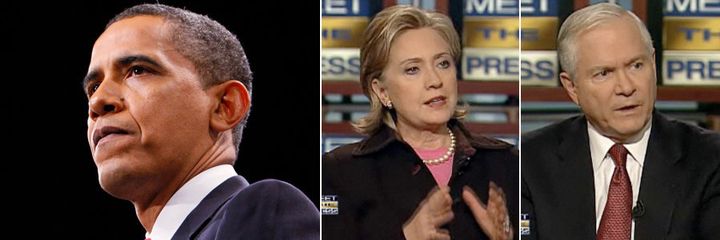
The Obama administration will only use money from the Troubled Asset Relief Program to pay for one of the president's newly announced job-creation initiatives, relying on other sources of revenue to pay for the other two major components.
The president announced new plans on Tuesday for infrastructure repair, small business loans and home retrofitting. But only one part of that three-pronged approach -- small business lending -- will be paid for out of the $200 billion the White House says is left over from TARP.
"No one is suggesting using these savings directly for job creation programs," a senior administration official tells the Huffington Post. "The only part of the TARP savings that would be used directly would be for small business lending."
The clarification by the White House official comes as a bipartisan chorus of lawmakers question the extent to which the president can use repaid or unspent TARP funds. Rep. Brad Sherman (D-Cali), a vocal critic of TARP, told the Huffington Post that funds could only be spent on financial-industry related expenditures, "including things like lending to small business loans." He and others warned that if the White House wants to devote TARP cash to building highways and bridges or to promote the weatherization of homes, it will have to go to Congress for authorization.
The administration acknowledges that point. In a conference call with new media reporters on Tuesday, economic adviser Austan Goolsbee said that a "significant amount" of what the White House is hoping to do, "has got to be legislative and the intention is to be legislative on those.
"I do think that some of the TARP money is specifically geared to the financial sector and financial institutions, so you could envision if it were needed to be, actual direct use of TARP resources on things that were financial-oriented," he added, pointing to small business tax credits.
The limitations on the White House's use of TARP funds (either unused or paid back) places additional hurdles in the administration's push for job stimulus. Funding for infrastructure improvements and home weatherization programs will have to come from alternative sources. And it remains to be seen whether there is a willingness within Congress to authorize additional spending.
There is, moreover, a wholly separate debate over whether the Obama administration actually has $200 billion in unused TARP funds to devote to small business lending.
Sherman stresses that any money paid back to the TARP by troubled banks must go to deficit reduction. "The Treasury has, without the slightest legal justification, claimed they can recycle that money," he said. "And, if you look at the code sections, they are completely wrong."
If this is the correct interpretation of the law, which is disputed by the White House, it could greatly restrict the administration's room to operate. In short: there may not be $200 billion.
Sherman insists that the administration already spent at least $600 billion of the allocated $700 billion to help resuscitate the banks (with some of that money paid back). A report produced by the Congressional Oversight Panel in late October listed $242.6 billion in TARP funds as "available and uncommitted." But that includes $72.9 billion in funds returned by recipients, which would mean that there was only $169.7 billion that had never been spent. And a chart produced by the Wall Street Journal on November 12, 2009, noted that of the $210.1 billion remaining balance in TARP, $70.8 billion comes from "repayments" -- meaning that only $140 billion or so had never been used.
Others estimates of the unspent funds are more generous. The investigative journalism group ProPublica notes that, of the $700 billion authorized by Congress in October 2008 via the Emergency Economic Stabilization Act, only $452.3 billion is currently committed (though there is no indication of how much of the uncommitted funds includes repayments). An analysis of Treasury Department data by the Huffington Post shows that roughly $225 billion of the $700 billion has never been spent.
Asked about this dispute, another senior administration official insisted that Sherman's concerns were largely overstated. The important thing, he said, is that there have been "pretty remarkable savings" under TARP that could be "applied to deficit reduction" and "create new fiscal space to help meet the urgent short-run imperative of job creation."
